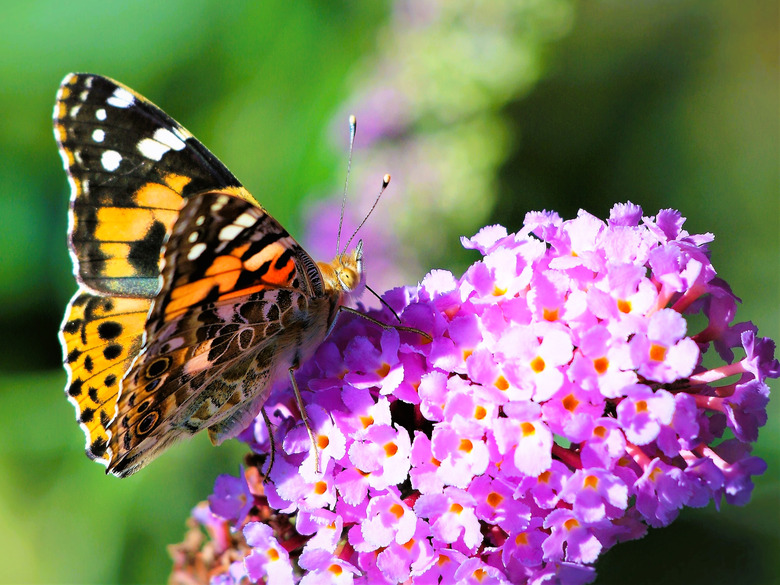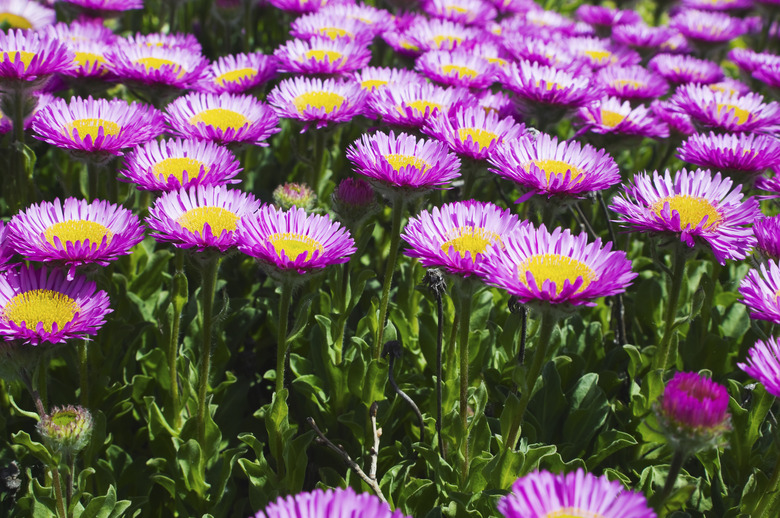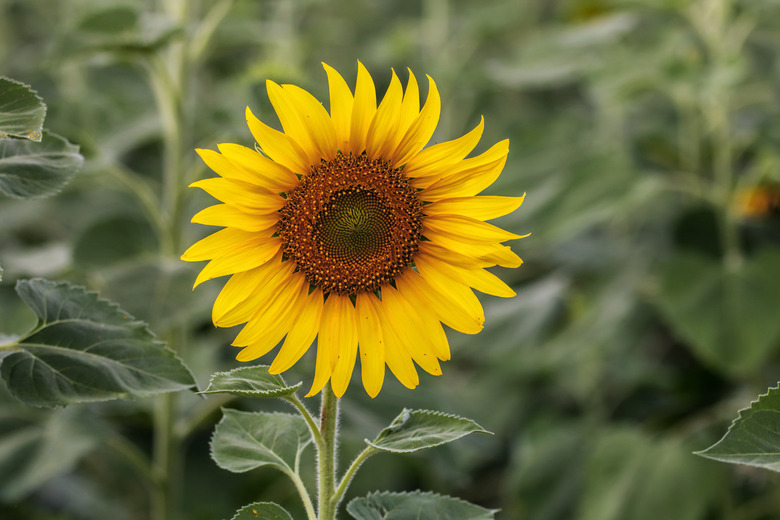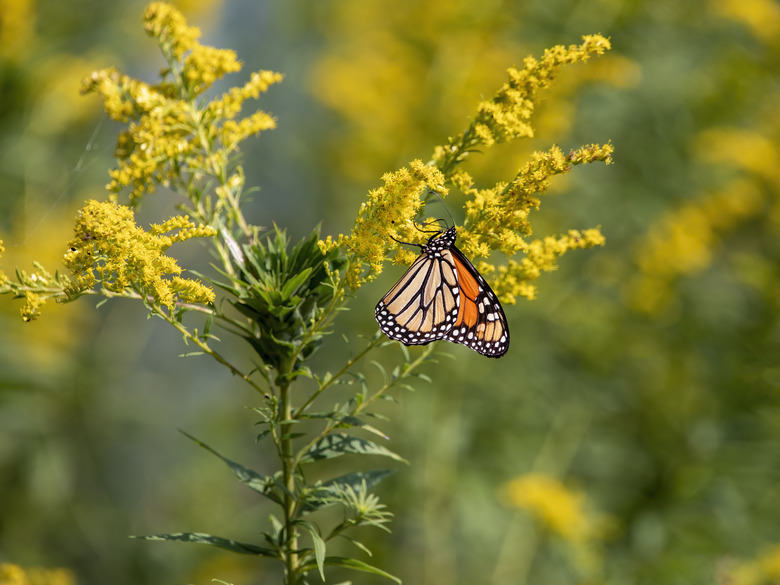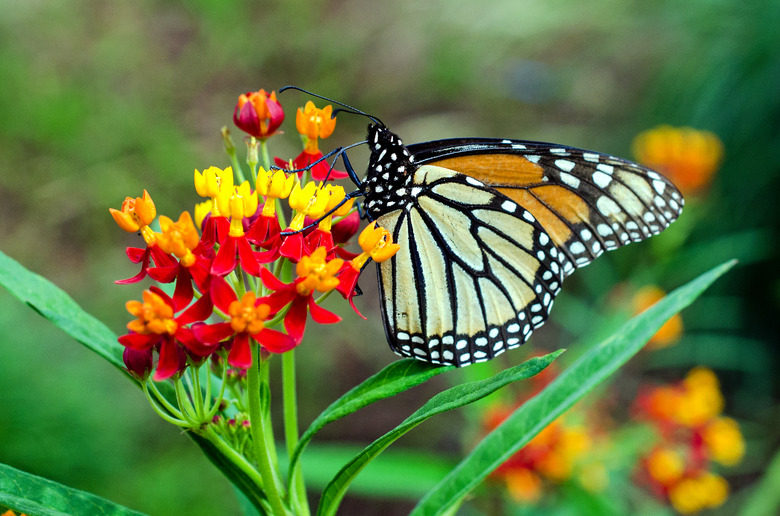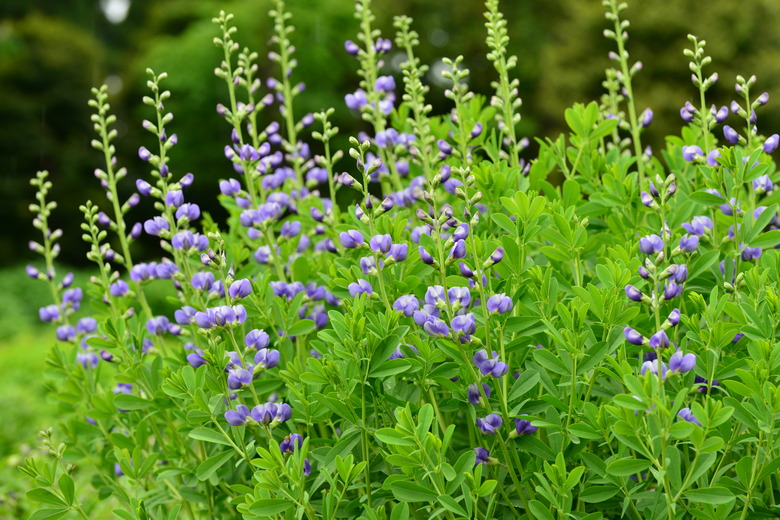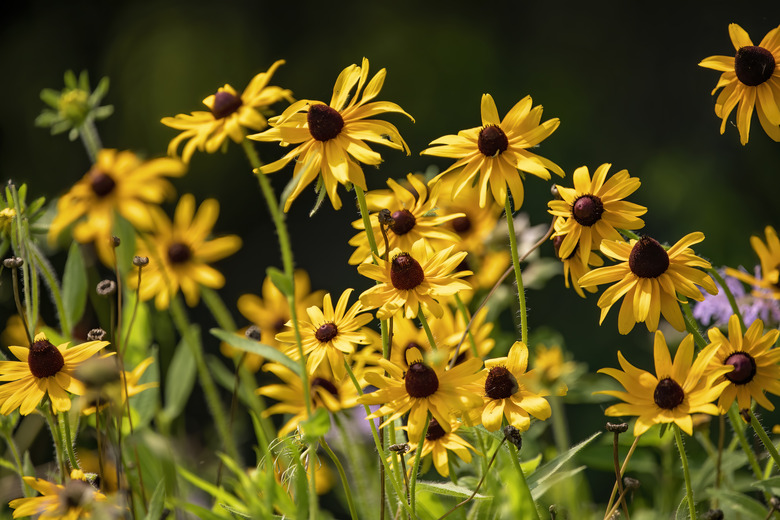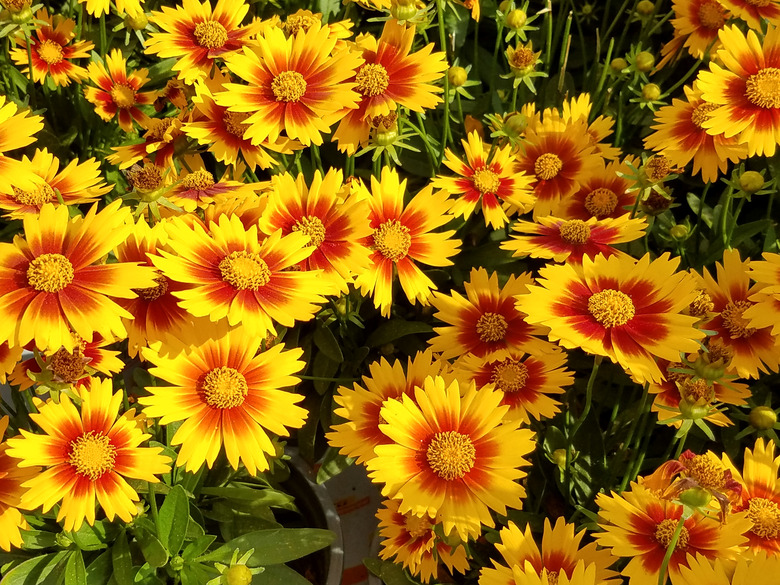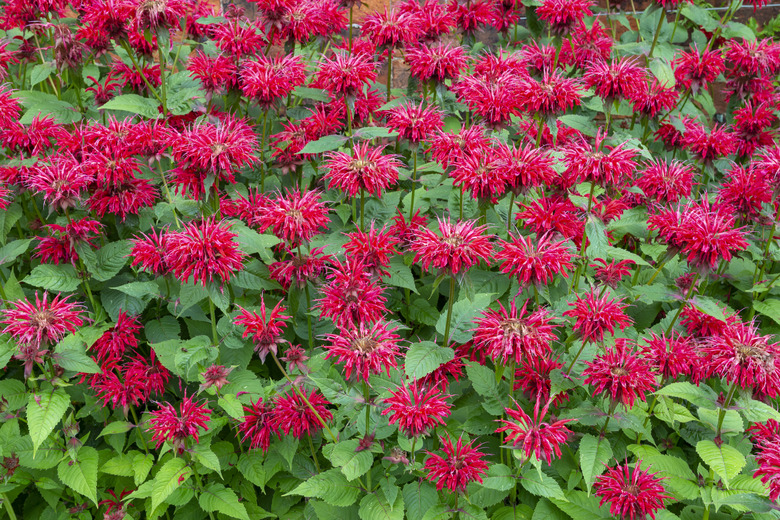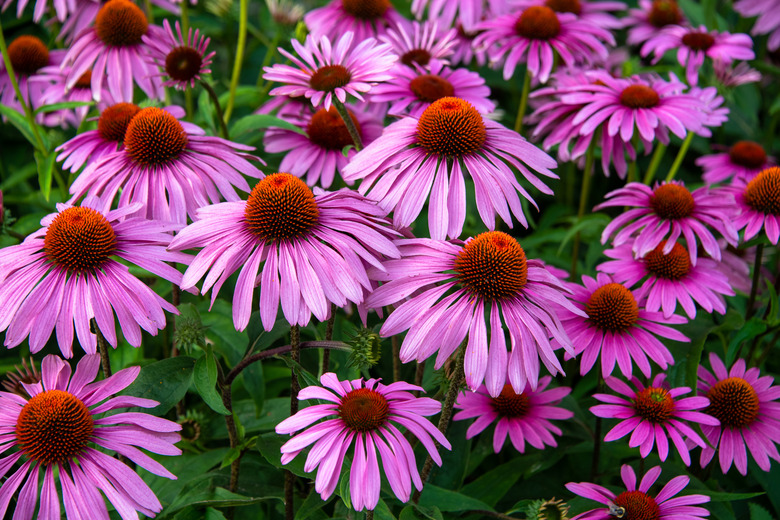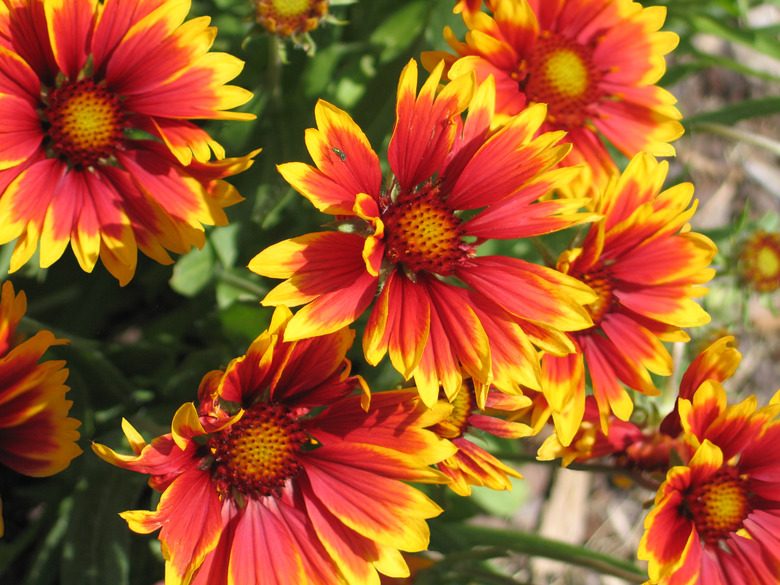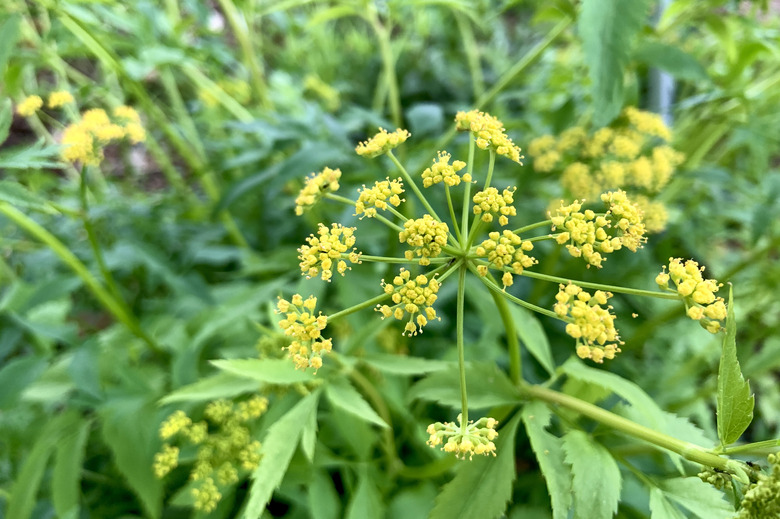12 Stunning Plants That Attract Butterflies And Are Easy To Grow
We may receive a commission on purchases made from links.
Planting a butterfly garden will give you hours of entertainment as you watch delicate wings fluttering from flower to flower. There's a growing awareness, however, that gardening should serve a purpose beyond pleasing our senses. When your garden includes plants that butterflies are attracted to, you create a native garden ecosystem that feeds both the butterflies and the bees that pollinate. At the same time, you're providing food to birds that rely on caterpillars to feed their young.
Doug Tallamy, author of Bringing Nature Home: How You Can Sustain Wildlife with Native Plants, co-founder of Homegrown National Park, and professor of agriculture in the Department of Entomology and Wildlife Ecology at the University of Delaware, has seeded a national conversation about how we can patchwork together a national nature preserve by starting in our own gardens.
"[Planting a butterfly garden] is not just a hobby. It's not just for fun; it's your responsibility as a landowner," Tallamy tells Hunker. "Most people do not consider themselves a future part of conservation, but they are." He encourages everyone to add a few pollinator-friendly plants, even if that means a small container garden on your apartment balcony. "You know, a monarch butterfly will find a single milkweed plant," Tallamy says. If enough people around you do the same, you suddenly have a valuable source for pollinators.
Discover tips on starting your very own butterfly garden and what plants to grow to attract these pollinators, who are rapidly becoming endangered.
Why You Should Plant a Butterfly Garden
Why You Should Plant a Butterfly Garden
Tallamy argues that since people have overtaken 95 percent of North America for development and agriculture, it's up to us to support pollinators and the 90 percent of flowering plants that depend on them to survive. While butterflies aren't the best pollinators, 96 percent of land-based birds feed their young with insects and mostly with caterpillars, he notes.
Tips on Starting a Butterfly Garden
Tips on Starting a Butterfly Garden
To encourage caterpillars in your garden, you'll need to plant native species that host the larvae of butterflies and moths. You may need to look to a native plant nursery to find them.
When choosing wildflowers, select numerous species that bloom at different times of the year so you'll have a steady food source available. Try to include at least one "keystone species" (or an organism that essentially holds an ecosystem together) in your pollinator garden that supports a wide range of insects. If you're not sure what these are, don't worry. We've listed some of the best plants that attract butterflies to get you started.
1. American Aster
1. American Aster
American asters (Symphyotrichum spp. and Eurybia spp.) feature small white, lavender, pinkish, or blue disk flowers surrounded by daisylike ray flowers. They typically bloom in late summer or early fall, attracting every nearby butterfly and bee. Asters also serve as a host plant for pearl crescent and checkerspot caterpillars.
Most regions in the country — from Alaska to Florida — are home to native asters. Some common selections are the New England aster (S. novae-angliae) in the East to the Pacific aster (S. chilense) on the West Coast. There are plenty of sun-loving species as well as those that do well in shade, like the white wood aster (E. divaricata).
Growing Notes:
You'll find asters that grow as short as 6 inches and as tall as 8 feet, so there are plants for the back or front of your flower border. Most American asters grow in USDA plant hardiness zones 4-8, but there are species that will grow in colder or hotter climates.
2. Sunflower
2. Sunflower
When you hear "sunflower," you likely think of giant flowers towering in the summer garden. Those are usually versions of the common sunflower (Helianthus annuus), an annual that grows wild in dry, sunny meadows in the western half of the country and serves as a natural bird feeder in fall. But there are 150 other Helianthus species, some of them perennials and most of them native to the Americas. They may not all have huge flowers, but these are tough plants that can bloom from summer until frost, and they host caterpillars of the silvery checkerspot.
Growing Notes:
Because there are so many different species, you'll need to pay attention to caring for your sunflower and your growing zone. For example, the woodland sunflower (H. divaricatus) grows in partial shade in the eastern U.S., while swamp sunflower (H. angustifolius) prefers damp spots in full sun.
3. Goldenrod
3. Goldenrod
If you're looking for a late-season bloomer that can tough it out in any soil, nothing beats goldenrod (Solidago spp.). The nectar in its feathery flower spikes is a butterfly and bee magnet, plus the birds love the seeds in fall.
Growing Notes:
There are species that can be grown in every continental state. Some can survive freezing winters in zone 2, and others thrive in hot summers in zone 8 or 9. Goldenrod is a host plant for the caterpillars of several moths and feeds a number of specialized bees that depend on them. These plants spread fast in the garden, but even the shallow rhizomes of many species are easy to dig up for sharing with friends and family.
More well-behaved species include blue-stemmed goldenrod (S. caesia) and sweet goldenrod (S. odora). Zigzag goldenrod (S. flexicaulis) is a good choice for the shade garden.
4. Milkweed (Butterfly Weed)
4. Milkweed (Butterfly Weed)
Milkweeds (Asclepias spp.) are the only plants that host monarch butterflies, making these plants vital to their survival. But did you know that caterpillars of the queen butterfly and milkweed tussock moth also feed on milkweed?
Growing Notes:
Common milkweed (A. syriaca) has pinkish-purple spheres of flowers but is usually planted in large, natural spaces because it aggressively spreads. However, there are plenty of other choices that are native to most of the country, like orange-flowered butterfly weed (A. tuberosa) and pink-flowered swamp milkweed (A. incarnata). Whether you live in the desert Southwest, the humid South, or near the Canadian border, there's a milkweed out there for your garden. Most are very tolerant of all soils and require little care.
5. False Indigo
5. False Indigo
Sometimes called wild indigo and sometimes false indigo, Baptisia species feed the larvae of an impressive number of butterflies: the orange sulphur, clouded sulphur, frosted elfin, eastern tailed blue, hoary edge, and wild indigo duskywing. False indigo sends up bushy new growth every year, followed by pealike blue, yellow, pink, or white flowers in spring. The flowers turn into interesting black pods.
Growing Notes:
You can find native baptisia growing in much of the Midwest to the Southeast. Grow them in full sun and don't fuss over watering them, as they have a deep taproot and are drought-tolerant once established.
6. Black-Eyed Susan
6. Black-Eyed Susan
Black-eyed Susan (Rudbeckia hirta) is a an early, mid- or late-season bloomer, depending on climate, that deserves a place in every garden.
Bearing cheerful yellow-orange flowers with dark brown centers, black-eyed Susans attract butterflies and host caterpillars of checkerspot butterflies, and produce seeds that goldfinches love in summer through fall.
Growing Notes:
This biennial or short-lived perennial grows in zones 3-8 in full sun or partial shade, tolerates drought, and handles average garden soil without complaint. Black-eyed Susan grows throughout much of the U.S. If you want a towering coneflower related to black-eyed Susan, grow the green-headed or cutleaf coneflower (R. laciniata), which potentially reaches 10 feet tall.
7. Tickseed
7. Tickseed
Depending on where you live, you can choose from dozens of tickseeds (Coreopsis spp.) for your butterfly garden. Planted at the front of the border, these neat, tidy plants have slightly jagged yellow or orange daisylike flowers that draw the attention of numerous pollinators. One annual, plains coreopsis (C. tinctoria), has a striking maroon center. The species has a vast native range, from Canada to Eastern Mexico and has naturalized throughout much of the continental U.S. A perennial, lance-leaf coreopsis (C. lanceolata) is another popular species native to much of the country.
Growing Notes:
Hardy in USDA zones 3 through 9, coreopsis is a fairly easygoing plant. It prefers moist soil, but is forgiving if it gets a little dry, and it prefers full sun (meaning six to eight hours of direct sunlight).
8. Wild Bergamot
8. Wild Bergamot
Wild bergamot (Monarda fistulosa) is a relative of bee balm with frilly lavender blooms that draw a variety of pollinators, including butterflies; hummingbirds; and nighttime feeders, like hawk moths.
Growing Notes:
Wild bergamotgrows wild in most of the U.S. This perennial forms clumps that spread quickly without becoming invasive, but wild bergamot is easy to pull out if you want to keep it in bounds. Plant it in full sun (at least 6 hours) in zones 3 to 9b for best flower production (although it will still prosper in a partial-shade location). Keep it well watered.
9. Coneflower
9. Coneflower
These prairie plants have had a real resurgence, with nurseries selling coneflower cultivars in a wide range of new colors. Native Echinacea species are mostly purple and pink, though the Ozark coneflower (E. paradoxa) is yellow. E. purpurea is a purple coneflower native to the central and eastern US, while narrow-leaf coneflower (E. angustifolia) grows in the central to western US. Butterflies love them, and coneflowers also serve as a host plant for checkerspot butterflies.
Growing Notes:
Though there are many species of coneflower, most grow well in USDA zones 3 – 10. They prefer full sun, so make sure they have at least six to eight hours of direct sunlight and simply watch them blossom.
10. Blanket Flower
10. Blanket Flower
Both gardeners and butterflies find it hard to resist Gaillardia pulchella, a blanket flower sometimes called "firewheel" for good reason. The blooms of this annual look like orange-red wheels tipped in bright yellow. Gaillardia pulchella has naturalized across the South and will grow in dry, sandy soil. Gardeners in the Northwest can grow common Gaillardia (G. aristata), a perennial yellow flower that deepens to brown in the center. These are just two of the about 25 to 30 species of blanket flower that provide a banquet for bees and butterflies.
Growing Notes:
Blanket flower like full sun and grow in USDA zones 3 – 10. Because they're native plants they don't need to be overly watered, and in fact, they need very well-draining soil to thrive.
11. Purple Prairie Clover
11. Purple Prairie Clover
Dalea purpurea has delightfully odd flowers that look like a tall cone wearing a frilly purple skirt. Actually a legume, this drought-tolerant Midwestern native fixes nitrogen in the soil and won't ever need nitrogen fertilizer. Besides providing a good source of nectar, purple prairie clover is a host plant for the dogface sulphur and Reakirt's blue butterflies.
Growing Notes:
This plant is hardy in zones 3 to 8b, and is a pretty tough little plant. It requires full sun, but will thrive in almost any kind of soil and will tolerate dry conditions.
12. Golden Alexander
12. Golden Alexander
Golden Alexander (Zizia aurea) is the only wildflower on this list that doesn't provide a nectar source for butterflies, but it's here for a good reason. This native is in the same family as carrots and parsley and will attract black swallowtails looking for a spot to lay eggs. Of course, you can plant parsley, dill, and fennel to feed the local swallowtail caterpillars, but you might like to harvest those herbs for cooking in the kitchen instead. And while butterflies don't feed on golden Alexander's flowers, native bees flock to them.
Growing Notes:
Golden Alexander grows in moist soil in part sun in most states east of the Rockies.
